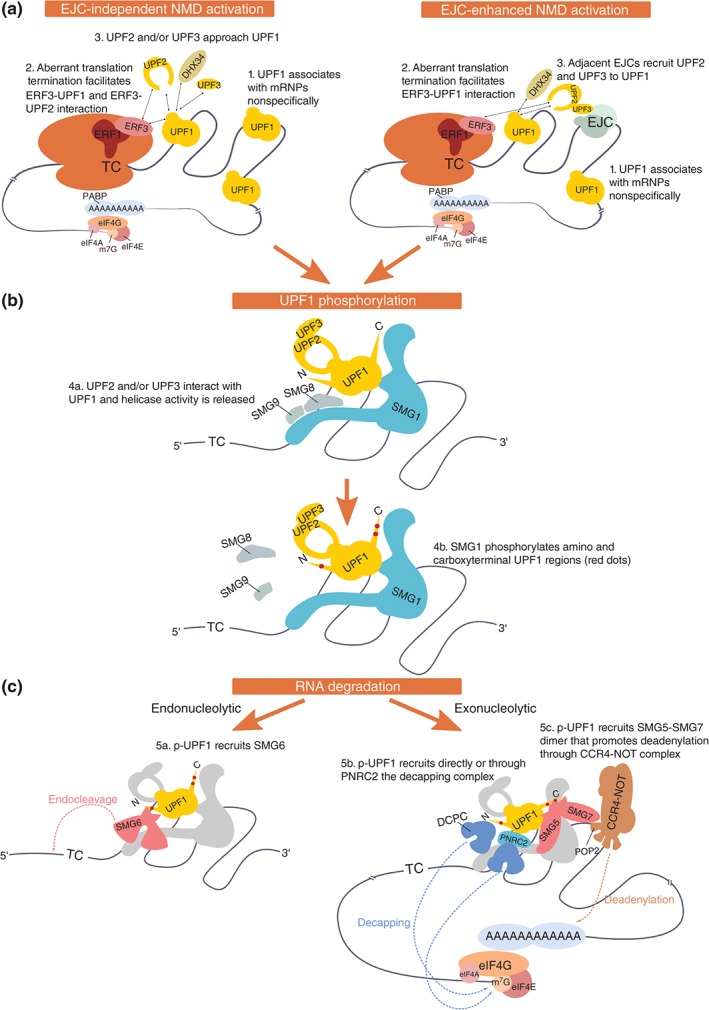Figure 2.

Nonsense‐mediated mRNA decay activation and target degradation. (a) Aberrant translation termination occurs when the termination codon (TC) is distant to the poly(A) tail. NMD licensing includes the interaction of ribosome‐bound ERF3 with UPF1 instead of PABP, and UPF1 activation relies on the recruitment of UPF2 and/or UPF3. In this model, UPF1 is proposed to initially bind mRNA nonspecifically and interact with ERFs on aberrantly terminating ribosomes. UPF1 is activated by UPF2 and/or UPF3 (EJC‐independent NMD activation). Adjacent EJCs enhance UPF2/UPF3 recruitment and therefore facilitate NMD activation (EJC‐enhanced NMD activation). (b) SMG1 kinase is activated when its inhibitory counterparts SMG8 and SMG9 are released, which is facilitated by UPF2 and DHX34. SMG1 phosphorylates UPF1 on N‐ and C‐terminal Ser and Thr residues followed by Gln (S/T‐Q). The helicase activity of UPF1 stimulates downstream NMD events. (c) Phosphorylated UPF1 (p‐UPF1) can promote mRNA degradation by at least three distinct mechanisms: SMG6‐mediated endonucleolytic cleavage (a), recruitment of the decapping complex (DCPC) directly by UPF1 or via PNRC2 (b), or SMG7‐mediated recruitment of the CCR4‐NOT complex (c). NMD‐targeted mRNAs are further degraded by general cellular exonucleolytic activities.
